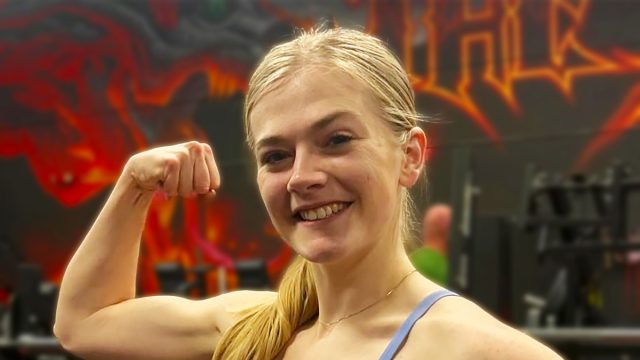7 Weight Loss Mistakes This Fitness Coach Wishes She Never Made

Are you ready to make some changes and become the healthiest version of yourself in 2025? It might be time to kick some bad habits, one expert claims. Holland Birkemeyer is a fitness coach who helps "women transform their body with heavy strength training, macros, and easy, high-protein recipes." In one of her first posts of the year, she reveals three key habits she is changing for the new year. "Things I'm saying no to in 2025," she writes across the Instagram video. "Here's the deal… For years, I stuck to routines that worked at the time, but as I've learned more about my body and goals, I've realized some things needed to shift. So for 2025, I'm making a few changes that just make sense for where I'm at now," she adds in the post.
She Won't Be Meal Prepping Once Per Week
The first habit she is ditching? Meal prepping once per week. "I've been a one-and-done meal prepper for years, but by Friday, I'm out of food and eating out more than I'd like. In 2025, I'm doubling up and prepping twice a week (Sunday AND Thursday). This way, I'll have fresh meals all week, and no more scrambling on the weekends," she writes.
She Won't Be Waking Up at 4 A.M.
The next habit she left in 2024 is waking up at 4 a.m. "I love an early morning, but doing it every single day has definitely taken a toll. My cycles had shortened to 21-22 days (hello, stress), so I started using a sunrise alarm a few months ago and letting my body wake up naturally. It's made such a difference—I'm up to 23-24 day cycles now, and I feel way more rested. Working on hormones is my number one goal for my upcoming building phase! So yeah, I'm not setting that 4 a.m. alarm anymore. 😂 I'm naturally waking up at 5-5:30, and that's good for me!" she says.
RELATED: Top Nutritionist Says Stop These 7 Macro Mistakes for Weight Loss
She Won't Be Consuming Gluten and Dairy
And finally, she is ditching gluten and dairy. "I'm not perfect—I still love some regular cheese here and there—but staying about 90% gluten- and dairy-free has been a game changer for me. 🙌🏼 My acne has cleared up 😭😭😭 I could cry… seriously… and I feel so much better overall. It's one of those things that just works for me, so I'm sticking with it!" she writes.
It's "Okay to Evolve"
"My point? It's okay to evolve," she concludes. "Your habits should serve your goals and make your life easier, not harder. That's exactly why I created Foodies with Booties—to help you balance your fitness, nutrition, and lifestyle in a way that works for YOU."
RELATED: She Lost 22 Pounds by Following These 5 Intuitive Eating Rules
She Will Make Sure She Is Eating Enough
In another post she reveals some more habits that she wish she knew when she was younger about weight loss. The first is that she would tell herself to eat more. "1200-calorie diets aren't it. Your body needs fuel to build muscle and lose fat. Starving yourself isn't the answer," she says.
She Will Also Choose Weights Over Cardio
Next, she would lift weights over cardio. "I thought cardio would make me 'toned.' Nope. Lifting is where the magic happens for real body composition changes," she continues.
She Will Stick to a Plan
Third, she would tell herself to find a plan and stick to it. "Switching workouts every week won't get you results. Follow a program for 6-8 weeks, and trust the process," she says.
RELATED: Nutrition Coach Reveals 7 Calorie Deficit Tips to Help You Lose 20 Pounds
She Will Lift Heavy
Next up, lift heavy. "If you're breezing through your sets, it's too easy. Big mistake. 😅 Add weight. You won't get bulky—you'll get strong AF and this will make the muscles 'pop' underneath the layer of fat," she writes.
She Will Stop Expecting Overnight Results
And, finally, stop expecting overnight results. "Progress takes time. Show up, stay consistent, and you'll get there," she says. And if you enjoyed this article, don't miss I'm a Nutritionist and Here Are 25 Weight Loss Truths You Need to Hear.




